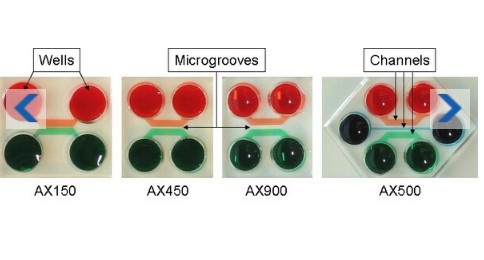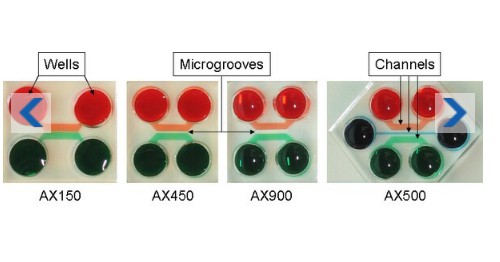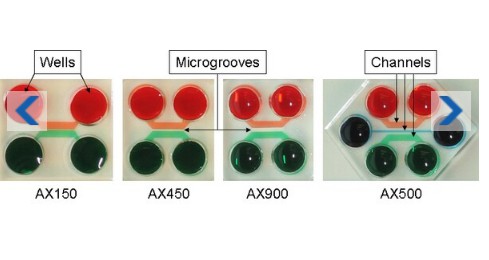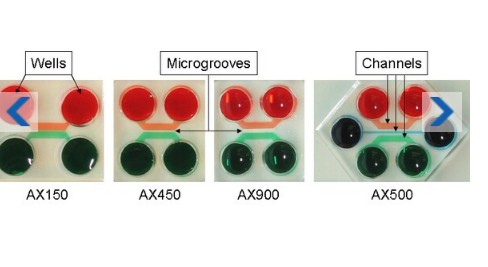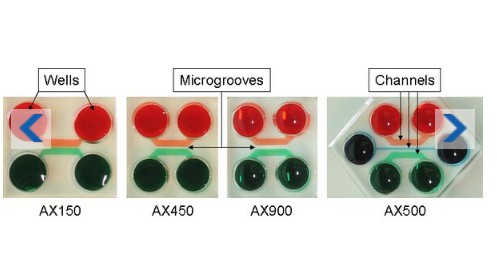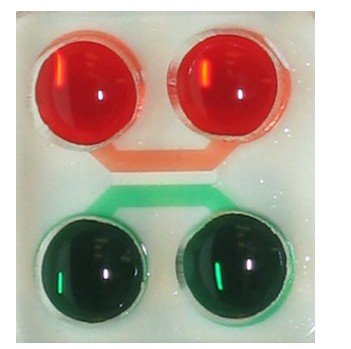AXIS™ Axon Isolation Device, 900 µm
| AXIS™ Axon Isolation Device, 900 µm |
| Overview |
AXIS™ Axon Isolation Devices are microfluidic tools that enable researchers to easily isolate, observe, and test developing neurites. They are currently being offered in four different formats to provide test flexibility during investigation.
AX90010
consists of 10 units of AX900, an axon isolation device consisting of four wells, two channels, and a set of microgrooves. Two of the wells are interconnected by a channel on each side of the device. The microgrooves are located in the area between
the two channels and their length is 900µm. Each microgroove is approximately 5µm in height by 10µm in width and are designed to allow neurite passage to traverse through while preventing cell bodies from flowing across the device. There are roughly
120 microgrooves in each AX900 device.
The AXIS Axon Isolation Devices have been shown to effectively isolate cell bodies from differentiating neurites for a variety of cell types (Taylor et al., 2005; Park et al., 2006; Liu et al., 2008;
Yang, et al., 2009; Taylor et al., 2009) and will likely work with most neuronal cell type that can be successfully grown in tissue culture. Because the AXIS devices are made from an inert and non-toxic polymer, cultures grown within AXIS devices
can be maintained for weeks at a time. (Chun et al., 1992; Shibayama et al., 1991). In addition, because the polymer used to fabricate the axon isolation devices is optically clear, cells cultured within the device can be imaged with high resolution
microscopy, including live cell imaging, confocal, and differential interference microscopy (Taylor et al., 2005; Park et al., 2006; Liu et al., 2008; Yang, et al., 2009; Taylor et al., 2009).
The microfluidic design of the AXIS devices
is highly conducive to generation of hydrostatic pressure, which can be selectively used to isolate a solution, as well as chemical targets of interest, on a designated side of the device (Park et al., 2006). In addition, immunocytochemistry (IHC)
can also be performed within an AXIS Axon Isolation device and a protocol to do so is provided in the manual. |
More detail

